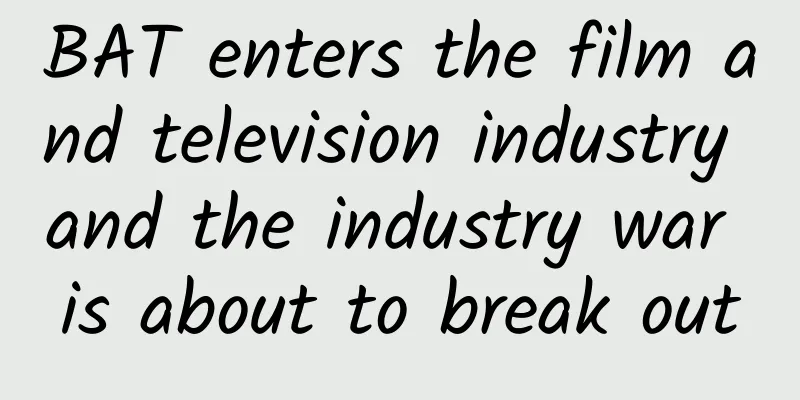SoftBank's acquisition of ARM: The former found a cash cow and the latter found a backer

|
Recently, according to foreign media reports, Japan's SoftBank has agreed to spend 24.3 billion pounds (about 32 billion US dollars) to acquire British chip design company ARM. This news immediately caused a strong response in the industry. So why did SoftBank acquire ARM at a premium (ARM's current market value is 22 billion US dollars)? If this move comes true, what will it mean to both parties? First, let's look at SoftBank. As we all know, as a Japanese telecom operator, traditional telecom business revenue accounts for about 70% of its total revenue (mainly from Japan's SoftBank and the United States' Sprint), and the remaining 30% mainly comes from strategic venture capital (including mergers and acquisitions). Speaking of strategic investment and mergers and acquisitions, according to statistics, as of now, SoftBank Group has 769 subsidiaries and 120 affiliated companies. Among them, the most well-known is the US$20 billion investment in 2013 to control (80% of the shares) Sprint, the fourth largest telecom operator in the United States, and the US$20 million investment in Alibaba in 2000. The reason why these two investments are well-known is that the amount of money invested in the two investments was very different from the final results. The largest investment in SoftBank's history resulted in SoftBank's high debt. According to statistics, SoftBank's total debt is currently as high as about 108.2 billion US dollars, and its net interest debt exceeds 80 billion US dollars (one-third of which is due to the acquisition of US mobile operator Sprint), and directly led to the US rating agency Moody's downgrading its long-term credit rating to junk level. In comparison, the investment in Alibaba may be the smallest investment in SoftBank's history, but it is this investment that has made SoftBank a lot of money. It is said that SoftBank's equity investment in Alibaba has made it nearly 1,000 times more profitable, as evidenced by the fact that in May this year, SoftBank sold only 4% of its Alibaba shares and cashed out as much as $10 billion, and still holds 28% of Alibaba's shares. It should be noted that there are two theories in the industry about SoftBank's first sale of Alibaba shares in 16 years and its subsequent sale of about 73 billion yen (about 685 million US dollars) of Japanese mobile game giant GungHo and 8.6 billion US dollars of Supercell shares. One is to repay debts (reduce debts to improve its own stock ratings); the other is to raise funds for the acquisition of ARM. But no matter what the purpose is, we can see that SoftBank's success and failure in investment are investments in the past, present and future. However, judging from the current investment income and losses, SoftBank's investment is at best a draw. The reason why we cite the example of SoftBank's investment in Sprint and Alibaba here is to illustrate that with the passage of time (the investment in Alibaba and Sprint was separated by about 13 years), along with the rapid acceleration of industry or industrial changes, SoftBank's judgment and grasp of the forward-looking development of the industry and profitability in investment have shown a declining trend. However, variables are variables, and we can still see some value and significance of SoftBank's acquisition of ARM for SoftBank's present and future. Here we might as well use SoftBank's $22 billion acquisition of control of US telecom operator Sprint in 2013 as an analogy to make a simple analysis. After all, these two investments were the first and second largest in SoftBank's investment (acquisition) history. The industry knows that when SoftBank invested in and controlled Sprint, Sprint had not been profitable for about seven years. In the three years after the acquisition, SoftBank also failed to successfully reverse Sprint's predicament. Sprint, which had been engaged in a price war, was overtaken by T-Mobile in terms of user numbers last year, falling from third to fourth place. In May this year, Sprint released its fourth quarter 2015 financial report, showing a huge loss of $554 million in the quarter, compared with a loss of $224 million in the same period last year, and the loss continued to expand. The reason for this, in addition to its own improper strategy, is closely related to the competition it faces in the US telecommunications market, including AT&T, Verizon, T-Mobile and many other competitors. In contrast, ARM, which was acquired today, not only has no rivals in the current mobile intelligent terminal (smartphones and tablets) market, but also defeated Intel, which may be considered the strongest and only rival in this field. More importantly, ARM's performance in the market and profitability. For example, last year, the shipment of ARM architecture chips reached 15 million pieces, an increase of 3 million pieces from a year ago, of which about half came from mobile devices. For this reason, ARM's profit increased by 31% to US$608 million, with revenue approaching US$1.5 billion, a profit margin of 40%, and a gross profit margin of 95.9%. Such a high profit margin not only makes the industry, but also SoftBank itself feel ashamed. Because the quarterly report as of March 31 this year showed that SoftBank's revenue was 2.34 trillion yen (about US$21.518 billion), net profit was 45 billion yen (about US$414 million), and the profit margin was only 1.9%. At this point, the most realistic significance or value of SoftBank's acquisition of ARM is to directly drive the improvement of overall profit margins and increase profits (if we simply calculate based on the existing financial reports of SoftBank and ARM, the acquisition of ARM can at least increase SoftBank's annual profit by about 20%, which is really immediate). This is incomparable to the acquisition of Sprint, and it also proves to shareholders and the capital market that this acquisition is worth the money. In addition to ARM's unshakable leading position in the mobile chip industry, ARM's growth rate in network equipment and IoT chips, which represent future industry trends, is even faster. It is said that nearly three-quarters of IoT-related chips currently use ARM architecture. This undoubtedly provides a strong endorsement for SoftBank's 2.0 transformation strategy, which is currently being advocated and carried out and has attracted great attention from shareholders and the capital market. As we all know, in SoftBank's 2.0 transformation strategy, the Internet of Things is an important component or one of the cores (another artificial intelligence), and the chip that is the basis of the Internet of Things is naturally the top priority. What's more, ARM has already occupied a place in the IoT chip market. Let's look at ARM. Although ARM has dominated the mobile chip market with its innovation and unique IP licensing business model, and has also made some gains in the Internet of Things market, its size (from the perspective of pure revenue and profit) is still too thin in the chip industry and is easily targeted by competitors for mergers and acquisitions. For example, in 2010, Apple said it wanted to acquire ARM for $8 billion, but was rejected. At that time, ARM's CEO said: "The only reason for the buyer to launch the acquisition is to eliminate competitors." There have been constant rumors that ARM is an acquisition target for Intel. Through this merger and acquisition, it can be said that ARM has found a "like-minded" backer. Despite this, ARM knows that it will not maintain its dominance in the IoT field as it did in the mobile field, because the IoT industry has just started, and ARM is almost at the same starting line as x86 and MIPS. Just as Google's Brillo IoT operating system supports ARM, Intel x86 and MIPS architecture chips, downstream manufacturers can also choose to re-align in this industry. It is worth mentioning here that Intel, which was blocked from the mobile market by itself, has been resisted and questioned by employees since its strategic reorganization last year (introducing a series of high-level executives from Qualcomm and other companies, laying off employees, etc.). The industry has seen Intel's determination to shift its focus to the IoT market. To sum up, we believe that SoftBank's acquisition of ARM is beneficial to both parties both in terms of current reality and future business logic. However, given the ever-changing current industrial development and competition, the benefits of business logic may be replaced by cruel reality (SoftBank's previous acquisition of Sprint is a clear example). In this sense, this acquisition is full of variables. As a winner of Toutiao's Qingyun Plan and Baijiahao's Bai+ Plan, the 2019 Baidu Digital Author of the Year, the Baijiahao's Most Popular Author in the Technology Field, the 2019 Sogou Technology and Culture Author, and the 2021 Baijiahao Quarterly Influential Creator, he has won many awards, including the 2013 Sohu Best Industry Media Person, the 2015 China New Media Entrepreneurship Competition Beijing Third Place, the 2015 Guangmang Experience Award, the 2015 China New Media Entrepreneurship Competition Finals Third Place, and the 2018 Baidu Dynamic Annual Powerful Celebrity. |
<<: Samsung S7 sales in the US outstripped Apple 6S? US media: There is no point in comparing
Recommend
Is the blood test in TV dramas really reliable?
Some references: [1] Xiyuan Jilu Translation and ...
You can advertise without money. These tricks can cut your marketing costs by half!
Is it possible to advertise without money? Before...
Why do ducklings swim in a straight line?
As the old saying goes: a person's name refle...
2022 Qingming Festival holiday arrangements: How many days are there? How to adjust the rest time? The latest official notification is here!
In half a month it will be Qingming Festival. my c...
Putting smart "environmental protection bracelet" on excavators? Reducing pollution and carbon emissions, Beidou shows its power!
Recently, the Shandong Environmental Science Soci...
If you just keep eating and eating, maybe you can "save the world"?
Before getting into the main topic, I would like ...
Why do ants have such clear division of labor? It turns out that their brain circuits are different
In the evolution of animals, a major turning poin...
How to improve the conversion rate of new users?
We often say that while learning to maintain old ...
Electric Technology News: The Chinese electric supercar that beat Tesla at the Geneva Motor Show has a power of 1,350 horsepower
Speaking of electric sports cars, who do you thin...
All questions and solutions for App Store listing
1. How much does it cost to list an app on the ap...
What can a public account do well in the early stages to accelerate user growth?
First of all, I want to say that the essence of b...
Thoughts brought by YunOS payment table: What is missing from the smartwatch market to mature?
Largely influenced by the launch of Apple Watch b...
WeChat turns off these 5 switches, and immediately releases more than 10 GB of memory, making it as fast as a new phone
When we use our mobile phones, we often encounter...
What should I do if I am a leader for the first time and am responsible for promoting a product?
So how do we implement this comprehensive operati...
Anniversary event planning
The growth of a person needs the blessing of birt...









